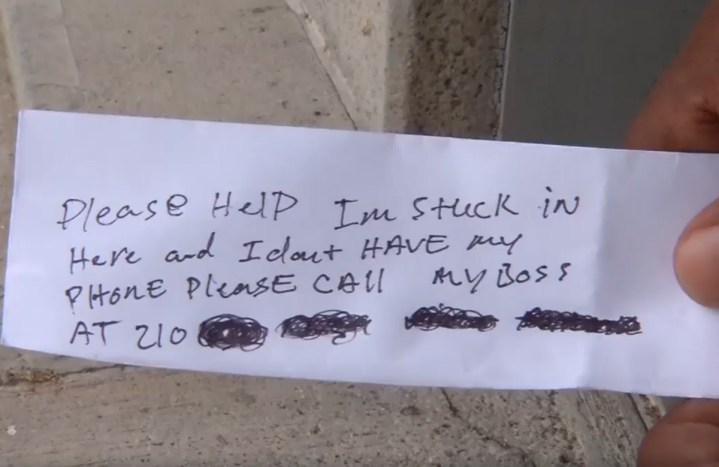
“Please help. I’m stuck in here and I don’t have my phone. Please call my boss on …”
You’re probably going to react in one of several ways. You might take a quick look around to check there isn’t some YouTube prankster filming you from afar. Or you might consider visiting the doc for a full health check. Then again, you might actually believe that there’s someone trapped inside the machine and decide to call the number.
The ATM user in Corpus Christi, Texas who recently experienced the above scenario opted for none of the above, instead choosing to grab the attention of a passing cop.
The pair approached the ATM, leaning in to confirm whether or not there really was someone stuck inside. To their surprise, they could hear “a little voice” coming from within.
Corpus Christi cop Richard Olden later confirmed what’s thought to be a world first — a human trapped inside an ATM.
“We have a once in a lifetime situation that you’ll probably never see or hear about again,” Olden told local media.
Hear from @CorpusChristiPD Senior Officer Richard Olden about an unusual incident Wednesday afternoon.https://t.co/oEMBi5xQAs pic.twitter.com/SJIOVLwZf7
— KRIS 6 News (@KRIS6News) July 12, 2017
Olden said the individual, who perhaps luckily for him hasn’t been named, was a contractor working to install an electronic lock on the bank’s ATM room. The lock apparently malfunctioned, leaving him stuck inside the small space behind the machine. He’d left his phone in the truck, but luckily had a pen and paper so was able to push notes through the machine calling for help.
“The officers that got here were actually yelling to him through the ATM machine as if a little guy was stuck inside the machine,” Olden said.
The cops called the trapped man’s supervisor but they were unable to unlock the door, leaving them with no choice but to knock it down.
“You’ll never see this again in your life,” Olden said, adding, “It was just crazy.”


